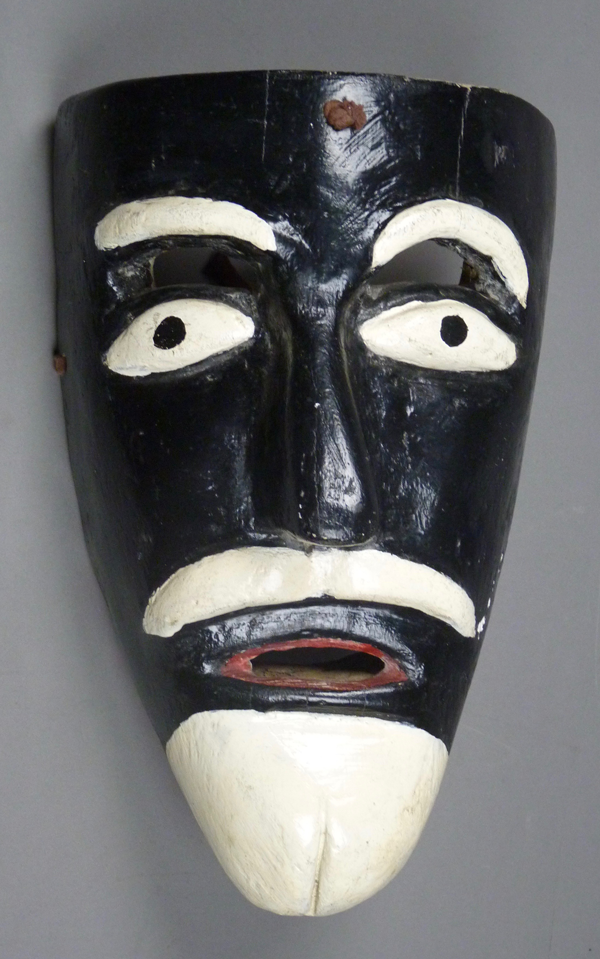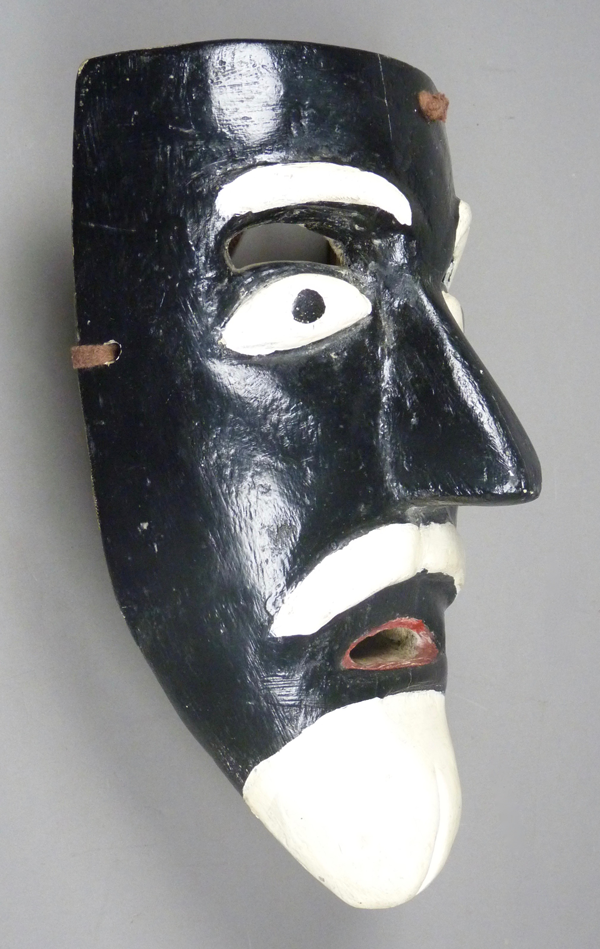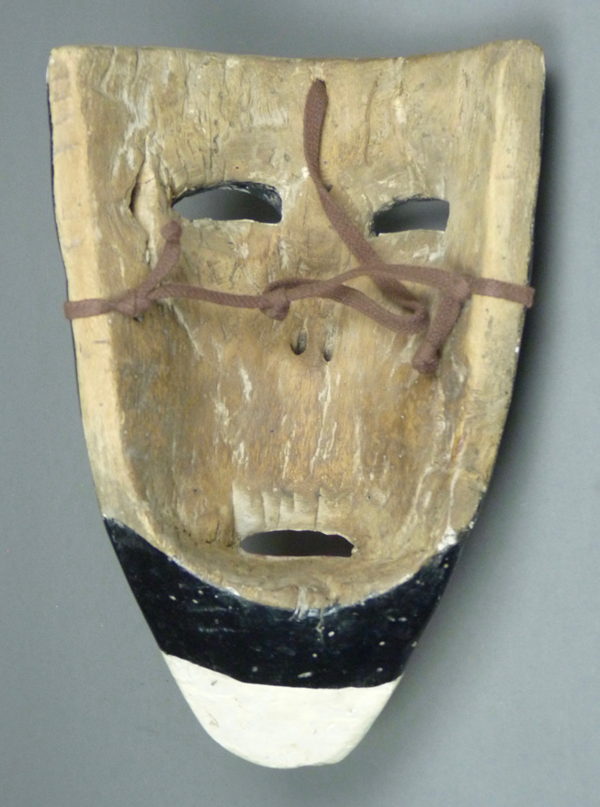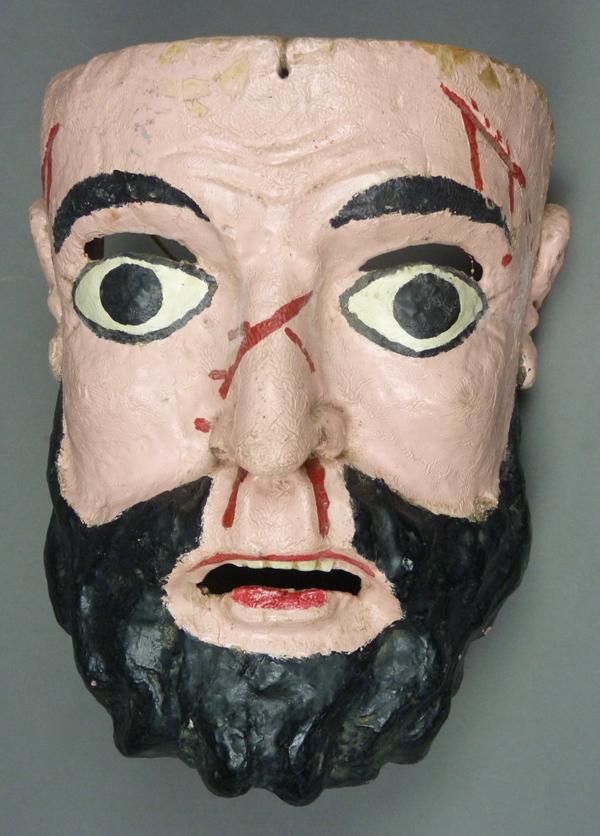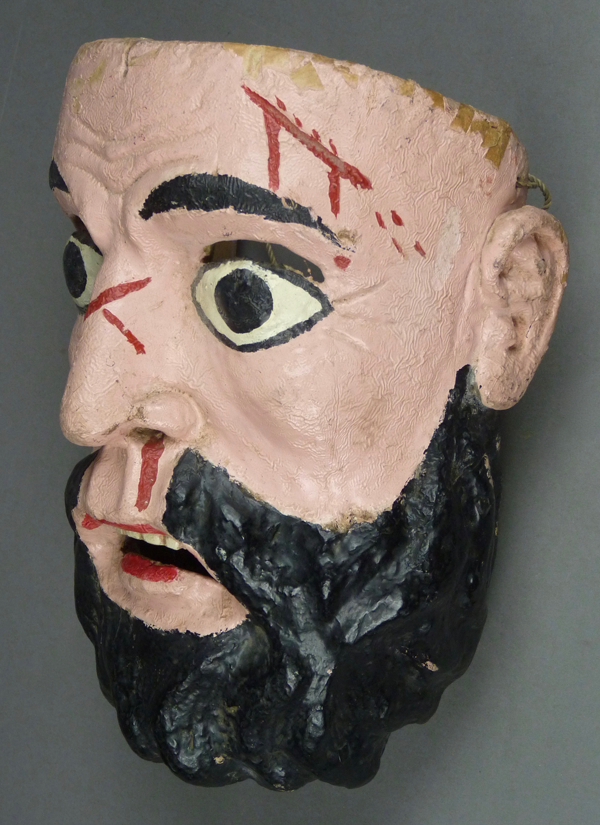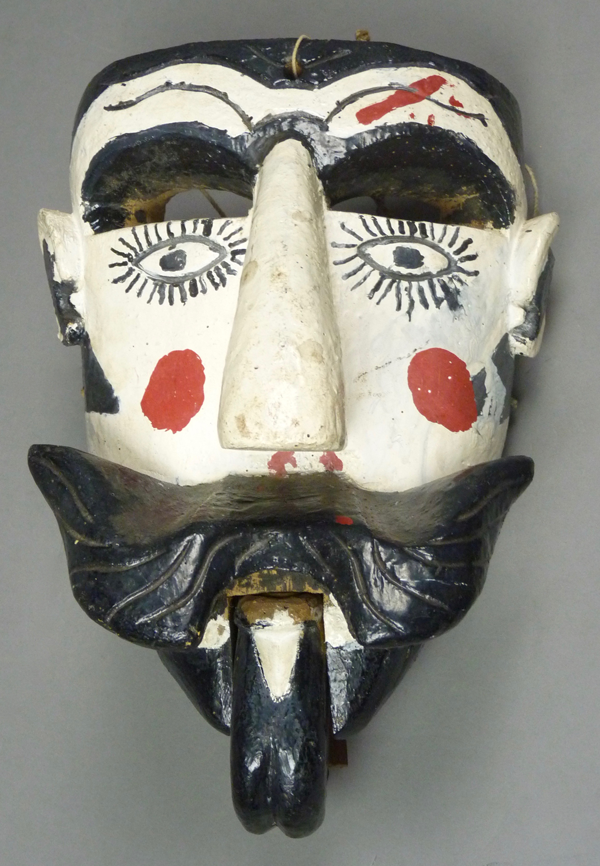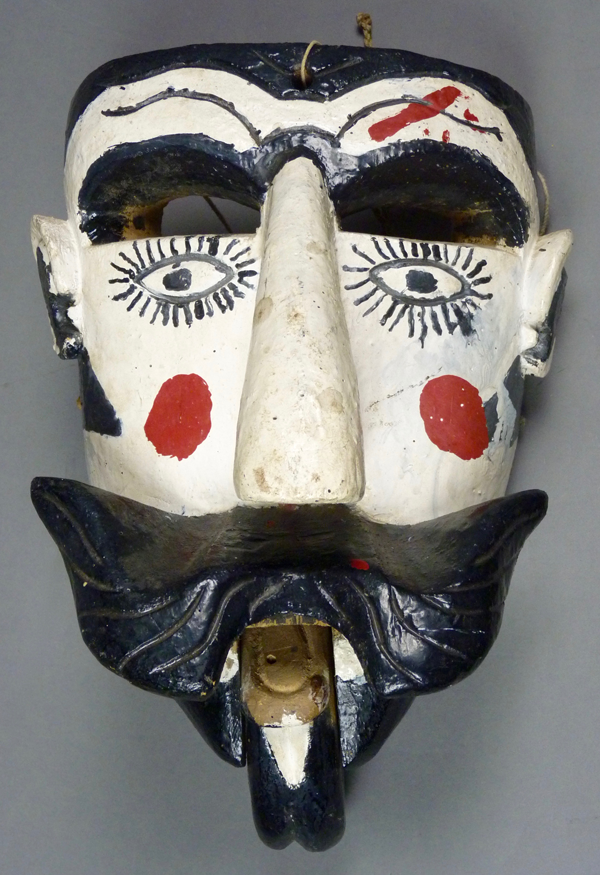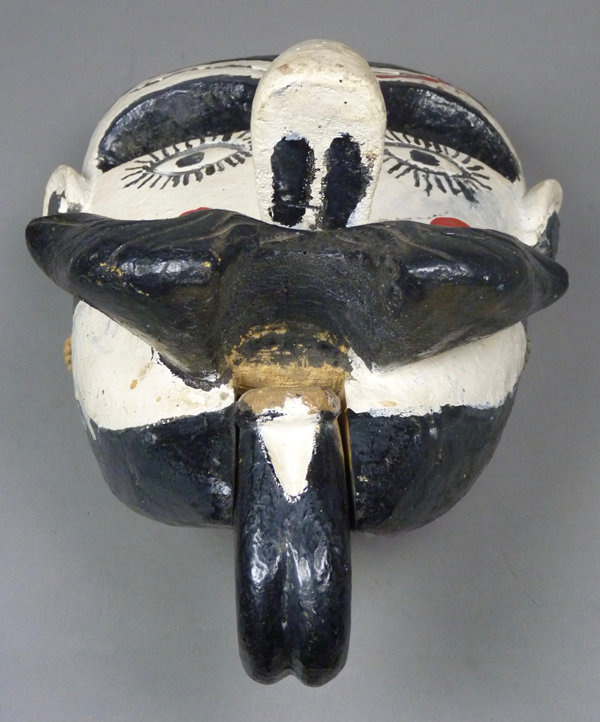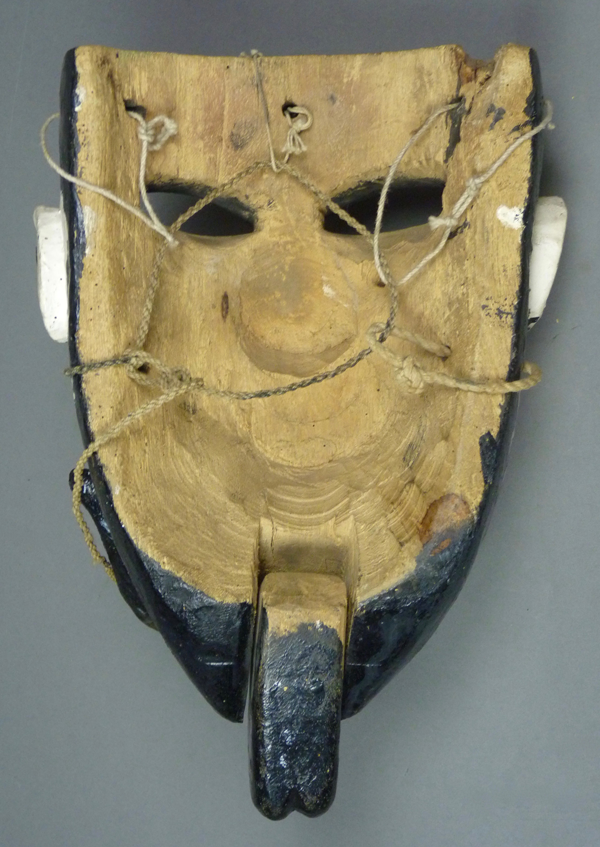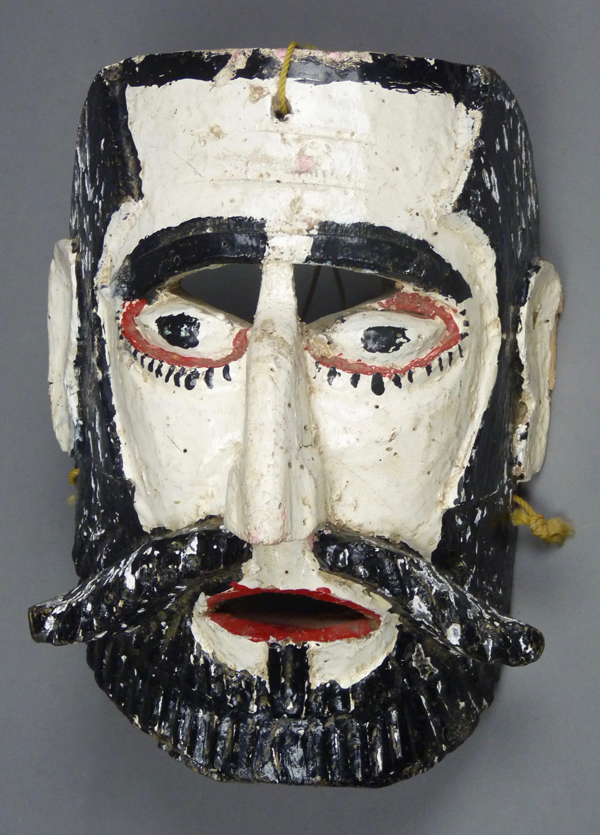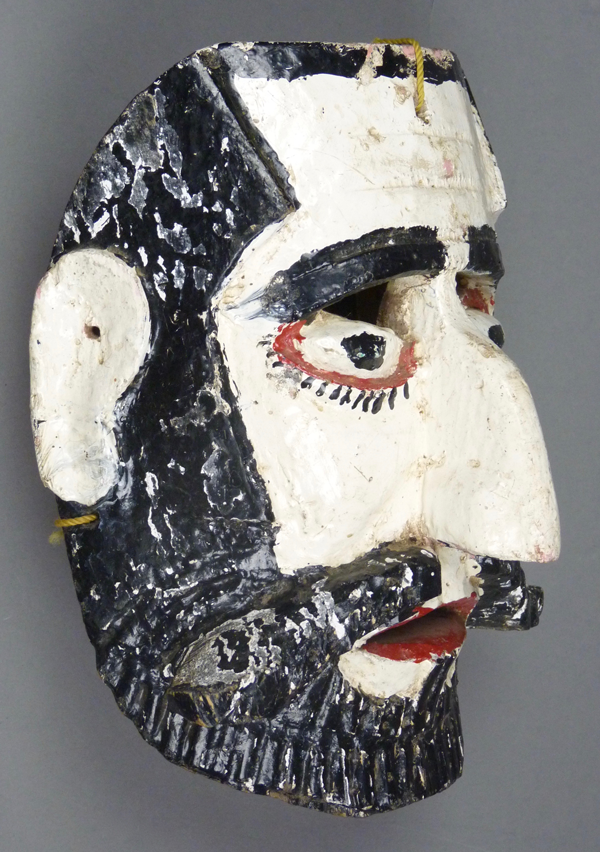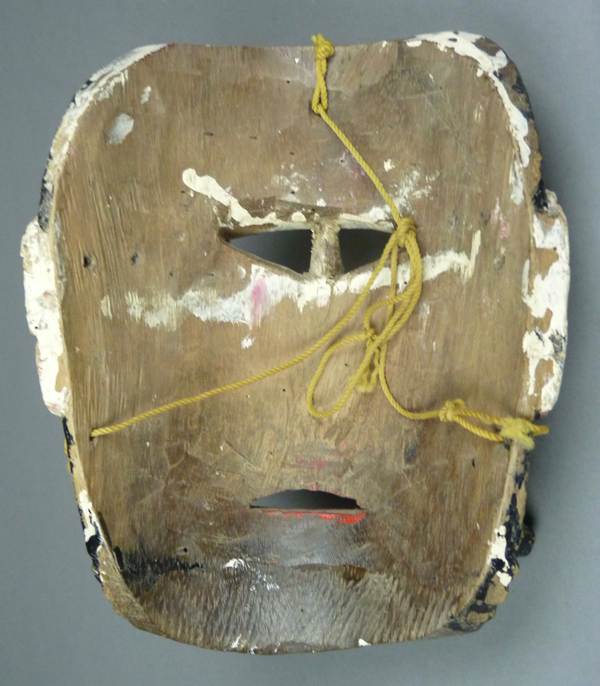When I was gathering together Moro masks from the State of Mexico, I was surprised to discover that there were all these Moors from Guerrero and Puebla that I had never shared with you. Today I have four more from Guerrero, and no two alike. The first of these is unusual because it is entirely black, except for white facial hair. I did include another black mask with the Archareos, two weeks ago , as those were all from Colotepec, Guerrero. I bought this one (and the next two) from René Bustamante in 1994. It was said to be from Atzacoaloya, Guerrero, but this mask does not show up in videos from that town or from the County Seat of Chilapa de Álvarez, so I don’t know where it fits in.
This is a dramatic and effective mask. It does have a Moor’s mouth, anxious or fearful. Maybe it was worn by a Moorish leader. We should recall that when the Spanish missionaries introduced the Dance of the Moors and Christians, so many centuries ago, the Indians of the Americas would have had no experience with Islamic peoples. They would only have known what the Spanish told them. In this context, we find that the Moorish Leaders in this dance are named for a variety of enemies of Christendom, including Mohammed and various Roman Emperors. But how should these be depicted? In traditional images of the Three Kings in the Christmas tradition, one of the kings is often depicted with dark skin; perhaps such exotic images contributed.
Look at the carefully carved eye in this next view, a feature I did not expect to find in a mask with such a simple design. However, a mask does not need a fancy design to be effective. This large black and white mask, coupled with a dramatic headdress or crown, would provide an impressive presence.
This mask is 12 inches tall, 7½ inches wide, and 4½ inches deep.
The back appears to be stained from moderate use. I believe that this is an older mask and that this design has gone out of fashion.
The second mask, also purchased from Rene Bustamante in 1994, is said to represent Tiberio (the Roman Emperor Tiberius), from Atlatlauca, Guerrero, yet another place that I have failed to locate. This too is an old and oversized Moro mask from the mid 20th century. There are carved wounds on the face and the mouth has an anxious expression.
The ears are very well carved on this mask and they resemble those on the mask featured in last week’s post.
This mask is 11 inches tall, 8 inches wide, and 4½ inches deep.
From the back, one can observe that the ears were carved separately and then applied to the mask. If you look carefully, you may also notice that the mask had split vertically to the right of the hollow for the dancer’s nose and this was then repaired. The back is very darkly stained from long use, but some areas have been sanded or scraped to allow a better fit on the wearer’s face. The hollow areas below the vision slits have a shiny surface as if coated with glue or epoxy for some unknown reason. Maybe the mask had glass eyes at one time, then they broke, and the mask was restored without that feature (but this is pure speculation).
The third Moor mask in today’s line-up, another purchased from Rene, was said to be from Atepexco, Guerrero, another town I have not been able to locate. Again we see a large mask, barely shorter than the last. It has a very impressive mustache and an articulated jaw that is obviously original, rather than being the result of a later conversion. To me, this mask has a humorous appearance, due to the oversized mustache and clacking jaw.
There is even a carved outline of a tongue on the lower jaw.
This is a good example of an articulated jaw that was carved separately from the body of the mask and then attached. The wearer makes the jaw move and clack with his chin.
As far as I can tell, the ears, nose, and mustache were all carved from the original block of wood. Sloppy paint obscures the clever abstract carving of the ears.
This mask is 10½ inches tall, 8 inches wide, and 5 inches deep.
There is prominent staining of the back from use.
Our last mask today is a Moro variant—an Achileo or Archareo (archer). Archareos are mainly found in the Mexican state of Guerrero and the State of Mexico. I showed three that were very typical examples in my post of April 9, 2018. This one, which looks rather different than those three, was said to be from Rancho El Igladero near Roselia, Guerrero, a place I have been unable to locate. I got it from the Cavin Morris gallery in 2001. To my eye, it actually looks more like a classic Moor mask than an Archareo. On the other hand, if this is indeed a mask from the Archareo dance, then the beard would suggest that it was probably worn by Santiago.
The mask was designed to display a balding forehead, but someone has softened the effect of this by painting the upper edge black. The ears are abstract in design, but elegant.
This mask is 9 inches tall, 6¾ inches wide, and 4 inches deep.
This back shows extensive staining from use.
Next week we will examine a beautiful old female mask that appears to be from Guerrero.
Bryan Stevens

